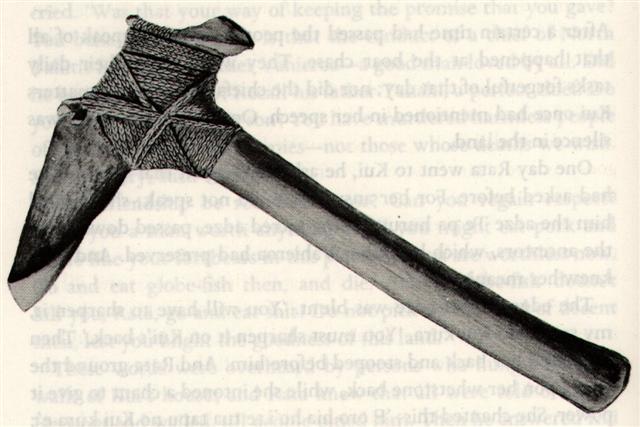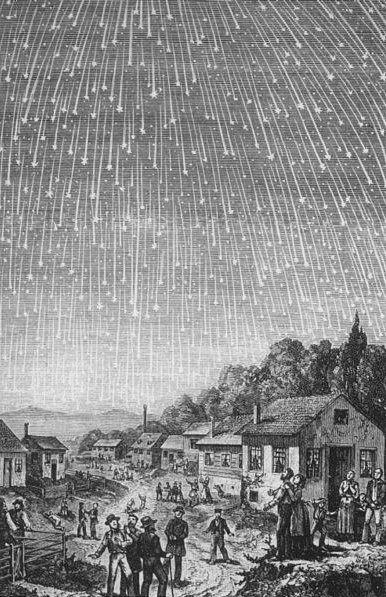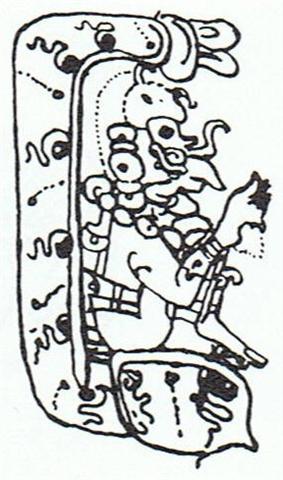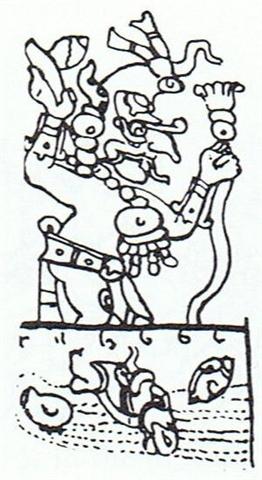Ba3.1 After Situla (*342) the text changes quality, although the first toki comes already at the end of line Ba2:
Toki. Small basalt axe. Vanaga. Stone adze. Van Tilburg. Ha'amoe ra'a toki = 'Put the adze to sleep' (i.e. hide it in the temple during the night). Barthel. Month of the ancient Rapanui calendar. Fedorova according to Fischer. To'i. T. Stone adze (e to'i purepure = with the wounderful adze). Henry. The Araukan Indians in the coastal area of northern Chile, have customs similar to those on the Marquesas and in both areas toki means adze according to Josť Imbelloni. The Araukans also called their chief of war toki and the ceremonial adze symbolized his function and was exhibited at the outbreak of war. In Polynesia Toki was the name of a chief elevated by the Gods and his sign was the blade of a toki. Fraser. Axe, stone hatchet, stone tool ...; maea toki, hard slates, black, red, and gray, used for axes T. P Pau.: toki, to strike, the edge of tools, an iron hatchet. Mgv.: toki, an adze. Mq.: toki, axe, hatchet. Ta.: toi, axe. Churchill. A Maori saying: he iti toki, e rite ana ki te tangata = though the adze be small, yet does it equal a man. (Starzecka)
... 'By striking the anvil,' said OgotemmÍli, 'they get back from the earth some of the life-force they gave it. Their blows recover it.' But blows on the iron must be dealt by day. The smith's work is day labour, no doubt because the smithy fire, being a fragment of the sun, could not shine at night. That is why it is forbidden, not only for smiths but for everybody, to strike blows on iron or stone or earth in the night-time. No blow of hammer or tap of pestle should be heard, whether loud or soft, in the silent hours. To strike blows at night would destroy the effect of the blows struck by day. It would mean the rejection of all that had been gained, so that the smith would lose whatever he had recovered during the day of the life-force of which he formerly divested himself ... OgotemmÍli gave us a clue. The hammer and the pestle - and by extension also such tools as a stone adze, toki - cannot be used in nighttime. Instead the life-force should only be regained by blows during daytime.
And we know that OgotemmÍli saw rain and the rays from the Sun as belonging together: ... He was moreover confronted with identifications which no European, that is, no average rational European, could admit. He felt himself humiliated, though not disagreeably so, at finding that his informant regarded fire and water as complementary, and not as opposites. The rays of light and heat draw the water up, and also cause it to descend again in the form of rain. That is all to the good. The movement created by this coming and going is a good thing. By means of the rays the Nummo draws out, and gives back the life-force. This movement indeed makes life. The old man realized that he was now at a critical point. If the Nazarene did not understand this business of coming and going, he would not understand anything else. He wanted to say that what made life was not so much force as the movement of forces. He reverted to the idea of a universal shuttle service. 'The rays drink up the little waters of the earth, the shallow pools, making them rise, and then descend again in rain.' Then, leaving aside the question of water, he summed up his argument: 'To draw up and then return what one had drawn - that is the life of the world' ... On one hand there was a meteor shower of falling lights (the Leonids) to be seen close to the Full Moon around the DECEMBER solstice, i.e. a week before the star of Oannes (the Lord of Waters),
and on the other hand the Sun reached the Rain star (Matar) when the Full Moon reached η Carinae. The Sun depicted in Ba3-2 could allude to a change from nighttime to daylight time. And in Ba3-3 the leg in front has been converted into a sign of hipu, which could convey the meaning of the life-saviour:
...Then the big Fish did swallow him, and he had done acts worthy of blame. Had it not been that he (repented and) glorified Allah, He would certainly have remained inside the Fish till the Day of Resurrection. - Qur'an, chapter 37 (As-Saaffat), verse 139Ė144. But We cast him forth on the naked shore in a state of sickness, And We caused to grow, over him, a spreading plant of the gourd kind. And We sent him (on a mission) to a hundred thousand (men) or more. And they believed; so We permitted them to enjoy (their life) for a while. - Qur'an, chapter 37 (As-Saaffat), verse 145Ė148 ... ... In the second century Roman Empire, a belief that the death of one could rejuvenate the health of another was widespread, and Hadrian had been ill for many years; in this scenario, Antinous could have sacrificed himself in the belief that Hadrian would have recovered. Alternately, in Egyptian tradition it was held that sacrifices of boys to the Nile, particularly at the time of the October Osiris festival, would ensure that the River would flood to its full capacity and thus fertilize the valley; this was made all the more urgent as the Nile's floods had been insufficient for full agricultural production in both 129 and 130. In this situation, Hadrian might not have revealed the cause of Antinous's death because he did not wish to appear either physically or politically weak. Conversely, opposing this possibility is the fact that Hadrian disliked human sacrifice and had strengthened laws against it in the Empire ... The Pestle star (π) was at the right thumb of Aquarius, and the Rain God series has him hidden inside a hole down in Mother Earth followed by him wading in water wielding a stone adze:
|
||||||||||||||||||||||||||||||||||||||||||||||||||||||||||||||||






.jpg)







